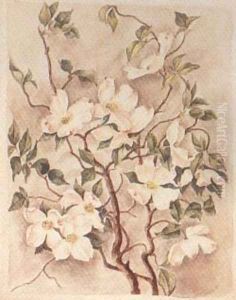Caroline Harrison Paintings
Caroline Harrison, born Caroline Lavinia Scott on October 1, 1832, in Oxford, Ohio, is most widely recognized for her role as the First Lady of the United States from 1889 until her death in 1892, as the wife of Benjamin Harrison, the 23rd President of the United States. Despite her relatively brief tenure in the White House, her contributions extended beyond the traditional ceremonial duties associated with the role of First Lady. Caroline Harrison was an accomplished woman in her own right, with interests and achievements that spanned education, art, and social reform.
Prior to her marriage to Benjamin Harrison on October 20, 1853, Caroline received an extensive education for a woman of her time, including studies in music and art at the Oxford Female Institute in Ohio. Her education and upbringing instilled in her a lifelong commitment to women's education and charity work. This commitment was evident in her active participation in various charitable organizations and her role in founding and serving as the first President of the Daughters of the American Revolution (DAR) in 1890, an organization dedicated to promoting patriotism and preserving American history.
As First Lady, Caroline Harrison made significant contributions to the White House and its operations. She was instrumental in advocating for the installation of electricity in the residence, overseeing an extensive renovation that modernized the mansion. Her interest in art and preservation also led to the initiation of the collection of china used by previous presidential administrations, laying the foundation for what would become an important White House tradition and historical collection. Moreover, she took an active role in the management of the White House, including the employment of staff and the organization of social events, setting standards that would influence the role of future First Ladies.
Caroline Harrison's tenure as First Lady was cut short by her untimely death due to tuberculosis on October 25, 1892, at the age of 60. Her legacy, however, extends beyond her years in the White House. Her contributions to art, education, and historical preservation have left a lasting impact on American society. Her leadership and advocacy for women's roles in public life and historical preservation continue to be celebrated, particularly through the ongoing work of the Daughters of the American Revolution and the collections she helped to establish at the White House.
